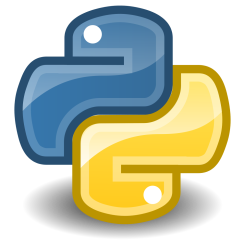
Definition of Done



I used the following page as a guide:
http://www.sitepoint.com/creating-crud-app-minutes-angulars-resource/

The basic principles discussed in the article are similar to Ruby On Rails standards.
Here is also another site I used as a reference:
http://www.restapitutorial.com/lessons/httpmethods.html Continue reading
![]()
I have already written about my thoughts on the Definition of Ready. The intent of that article is related to feature user stories.
Recently at my job, we spent a large deal of time reviewing reviewing vague regression defects as an entire team. In this meeting, we had ten team members spend two hours to prioritize ten defects.


In my efforts to gulp the cool-aid on all things Python, this weekend I uploaded my first package to PyPI. What is PyPI you ask? When you use pip, the default repository used is PyPI. From the official website:
PyPI — the Python Package Index
The Python Package Index is a repository of software for the Python programming language.

Early in my career as a web developer, I wanted to be able to demo my personal projects. In the last few years I found a platform as a service (PaaS) provider called OpenShift (https://www.openshift.com/).
For a web developer, creating the application and running it locally tends to be easy. The tricky part comes in when you want to show others what you have done! OpenShift provides a 100% free solution to this problem.
https://www.openshift.com/products/pricing/plan-comparison
This blog post will walk a user from account creation through application deployment in a step by step process.

20 Feb, 2015
I started out once again looking into AngularJS. This time, the goal was to integrate some CRUD operations using either $http or $resource.
AngularJS $http
http://www.bennadel.com/blog/2612-using-the-http-service-in-angularjs-to-make-ajax-requests.htm
$q is the angular promise library
AgularJS $resource
http://www.sitepoint.com/creating-crud-app-minutes-angulars-resource/
Most Single Page Applications involve CRUD operations. If you are building CRUD operations using AngularJS, then you can leverage the power of the $resource service. Built on the top of the $http service, Angular’s $resource is a factory that lets you interact with RESTful backends easily. So, let’s explore $resource and use it to implement CRUD operations in Angular.


I tend to prefer the term “best practice” over the word standard… when people see the word standard they immediately associate a mentality of rigidness and lack of innovation.